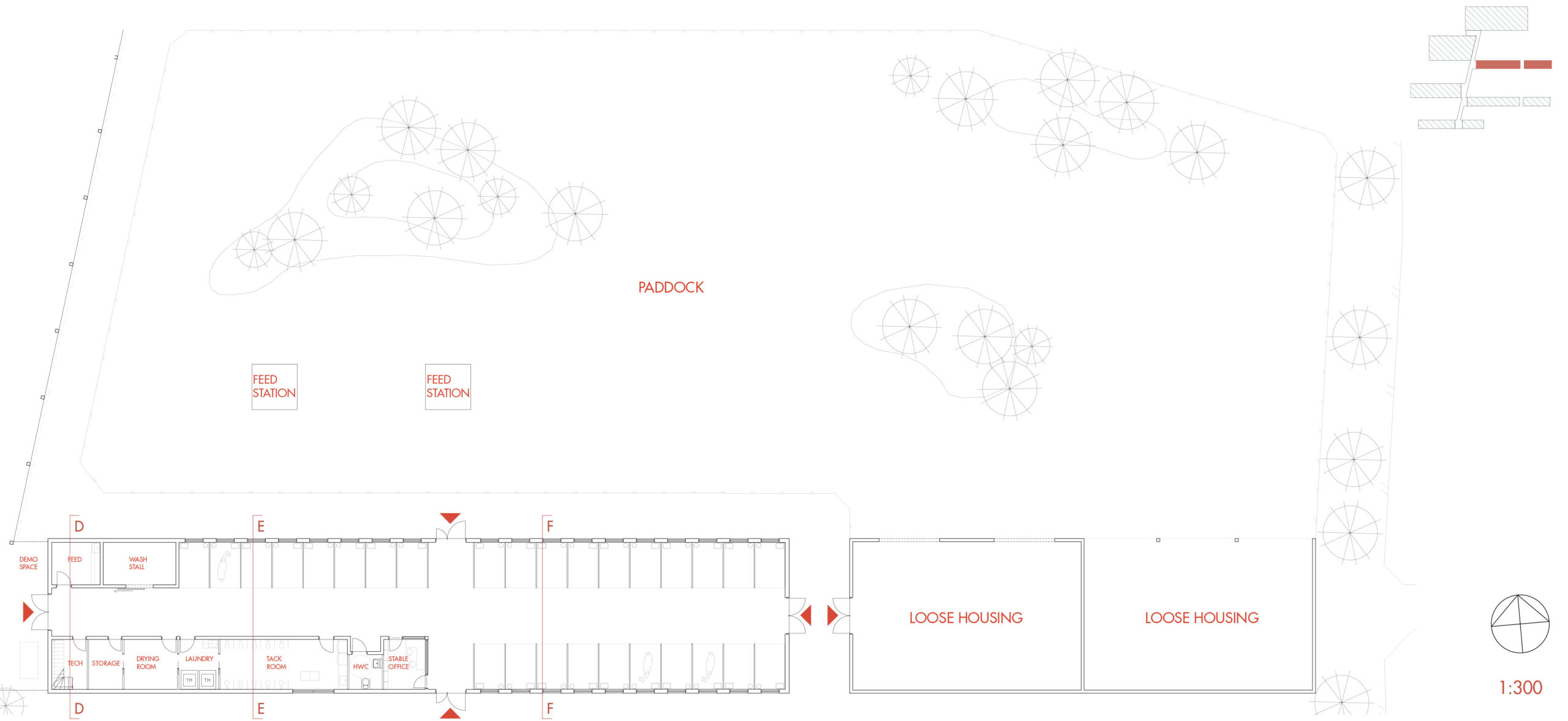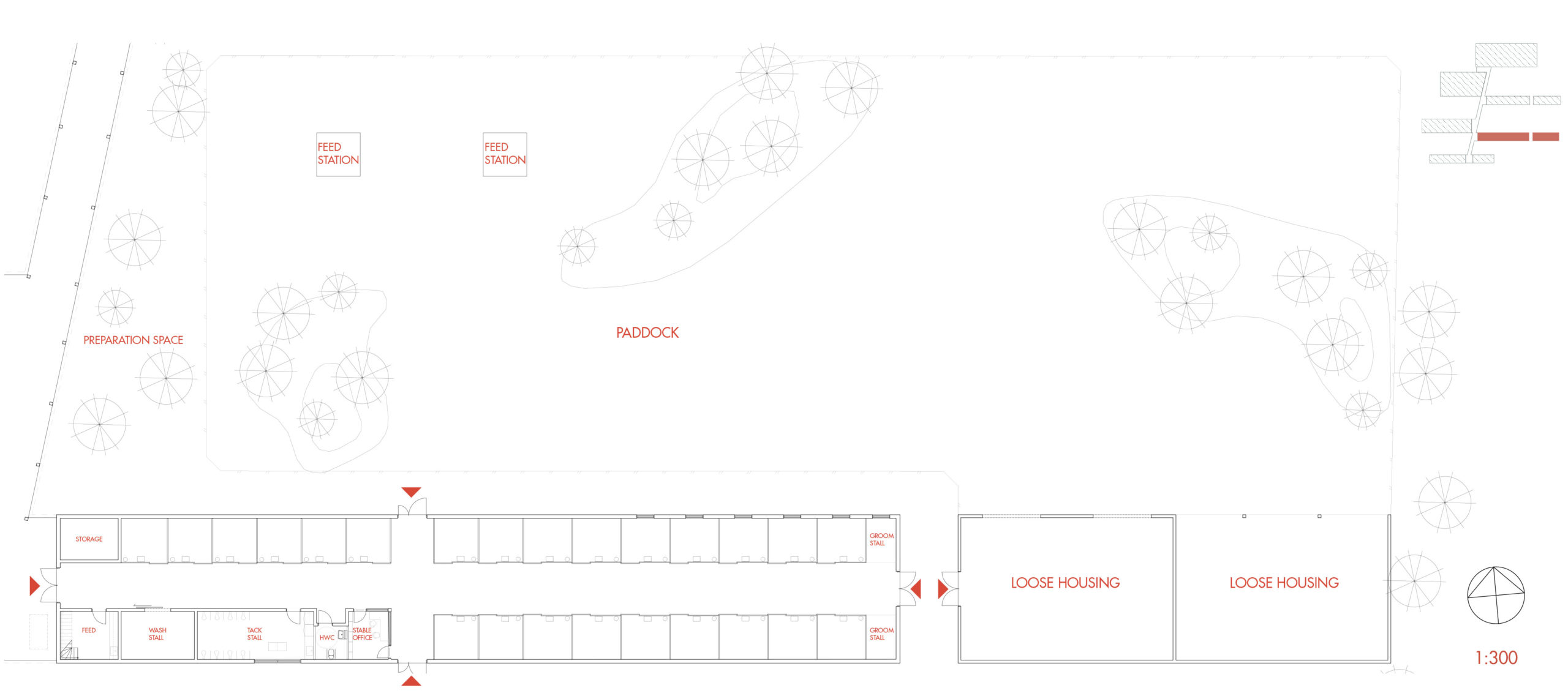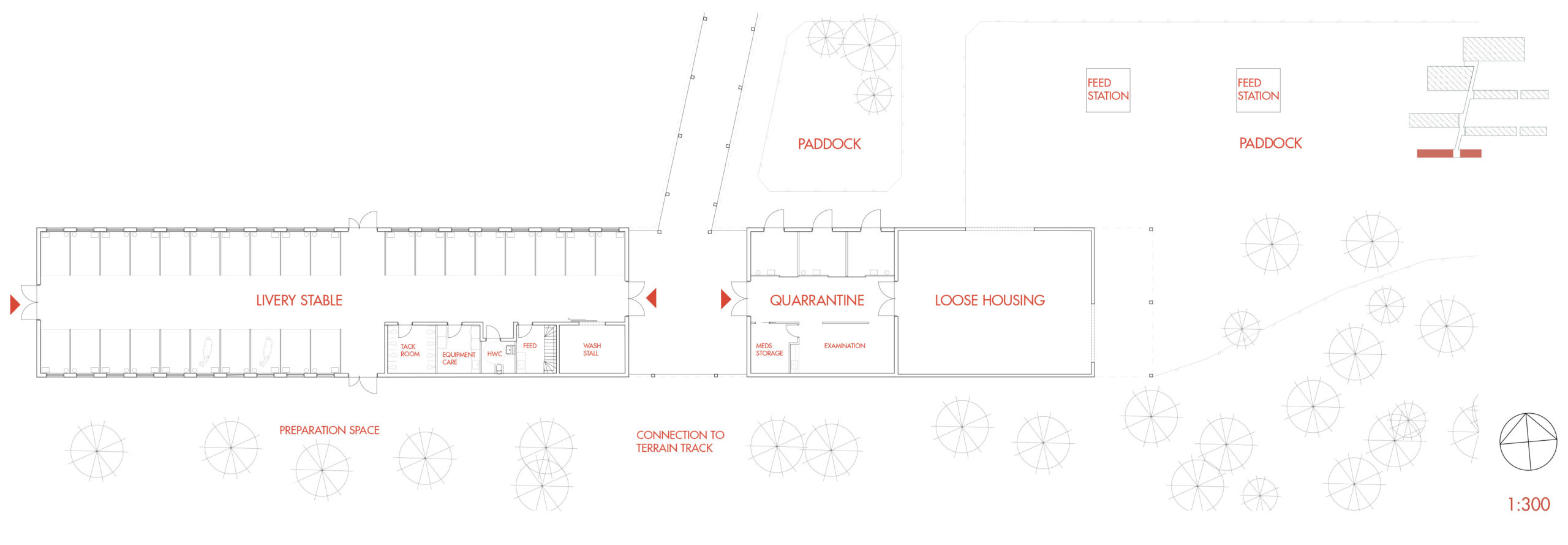stables.
pony stable.
The pony stable is close to the riding arenas and contains 28 flexible tie stalls which can be converted into 14 box stalls if needed. The stable has all the necessary support functions to be able to function as a separate unit.
The stable work as a grooming stall first and foremost, with the ponies spending the majority of their time in the loose housing system, in which the shelter can be directly accessed from the stable.
Between the buildings there is a gravel paddock, with feed and drink stations, for night-time or in between lessons. The paddock can be opened up and connected to the rest of the pasture.
horse stable.
The horse stable is similar to the pony stable, but with box stalls. This stable is for larger horses and the box stalls are of two different sizes; 3×3 and 3×3,5. Thanks to the boxes, it is possible to keep the horses inside of needed.
The manure management is done via an underground system of scrapes. Each box stall or tie stall is fitted with a hole where the manure can be thrown. It is then transported to the manure container.
livery stable.
The livery stable is where the member riders keep their horses. Just like the pony stable, it contains tie-stalls. This is because the horses only stay in stable for grooming and preparation and the rest of their time in the loose housing.
Loose housing for the livery horses is ideal as it is highly flexible, the horses can take care of themselves while at the same time get social contact with the other horses.
The livery stable does not contain laundry or wash as it can easily be done by the owners at home. It is also not connected to the underground manure system.




